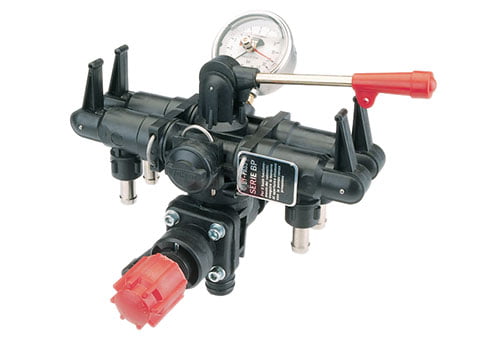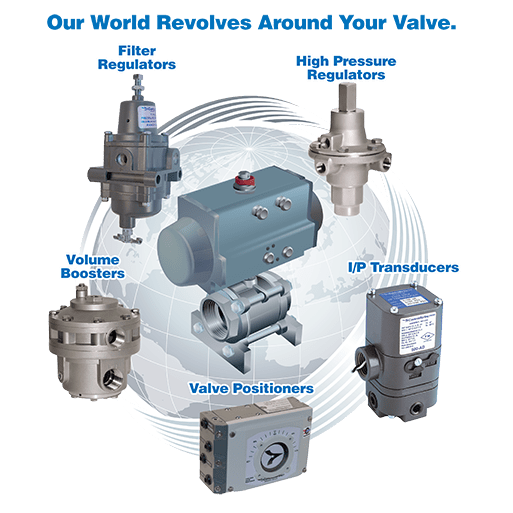Enhancing System Control with High-Performance Control Valves
Enhancing System Control with High-Performance Control Valves
Blog Article

Maximize Power Savings and Convenience With Advanced Structure Automation Controls
In the realm of contemporary architecture and facility administration, the combination of sophisticated structure automation regulates stands as a pivotal development. By taking advantage of the power of automation, structures can adapt, react, and evolve in means that were when unbelievable.
Energy Effectiveness Benefits
Energy efficiency advantages can significantly minimize power usage and operational costs in buildings. Energy-efficient systems, such as advanced structure automation controls, can maximize the use of resources like heating, cooling, and lights, leading to reduced power costs over time.
Furthermore, enhanced power effectiveness can lengthen the life-span of structure equipment and systems. By running a lot more successfully, cooling and heating systems, lighting components, and other structure parts experience less damage, leading to reduced upkeep and replacement prices. Furthermore, energy-efficient buildings usually regulate greater home values and rental rates, supplying lasting economic benefits to proprietors.
Furthermore, energy performance can enhance owner comfort and efficiency. Appropriately controlled indoor atmospheres with optimal lights and thermal conditions create a more pleasant and helpful work area, bring about improved worker satisfaction and efficiency. On the whole, the energy effectiveness advantages connected with advanced building automation controls are multifaceted, including expense financial savings, ecological stewardship, and occupant health.
Enhanced Comfort Control
Enhancing comfort control in structure atmospheres needs an innovative combination of sophisticated automation systems for ideal occupant health. By using innovative structure automation controls, centers can customize the indoor environment to meet the specific demands and preferences of owners. control valves.
By incorporating these sophisticated controls, structures can not just boost convenience but additionally enhance power performance by maximizing system operations based on actual occupancy and use patterns. Ultimately, prioritizing occupant comfort via advanced automation systems leads to a more satisfying and much healthier indoor atmosphere.
Operational Effectiveness Improvements

In addition, the application of real-time monitoring and analytics devices allows building drivers to identify power inadequacies and operational abnormalities immediately. By continuously keeping track of energy use patterns and system here performance metrics, adjustments can be made in real-time to enhance energy consumption and guarantee peak operational efficiency. control valves. Additionally, integrating need action strategies right into building automation controls can better improve functional performance by dynamically adjusting power usage based upon grid problems and pricing signals
Indoor Climate Optimization
Reliable indoor environment optimization is a fundamental element of structure automation controls, ensuring owners' comfort and wellness while maximizing energy financial savings. By utilizing sophisticated sensing units and controls, constructing automation systems can continually keep an eye on and adjust temperature, humidity degrees, air quality, and ventilation to develop an optimum interior atmosphere. Keeping comfortable and consistent problems not only enhances resident satisfaction however additionally boosts productivity and general wellness.
Indoor climate optimization additionally plays an essential role in energy efficiency. By fine-tuning ventilation, cooling, and heating systems based on real-time data and occupancy patterns, building automation controls can considerably lower power intake - control valves. As an example, applying approaches such as demand-controlled ventilation and thermal zoning can aid lessen energy waste while making certain that each location of the structure receives the needed conditioning.

Sustainable Setting Creation
Structure automation controls not just maximize indoor environment conditions for power effectiveness and occupant convenience but additionally lay the foundation for developing a lasting environment via tactical monitoring of sources and systems. By incorporating sophisticated structure automation innovations, such as sensors, check actuators, and intelligent software program, centers can adjust and check energy use in real-time to reduce waste and lower their carbon footprint. These systems make it possible for predictive upkeep, identifying prospective problems prior to they escalate and optimizing devices efficiency to improve long life and efficiency.
Additionally, lasting environment development prolongs past energy management to include water preservation, waste decrease, and indoor air high quality enhancement. Structure automation controls can manage water usage, detect leaks, and make certain correct garbage disposal techniques, contributing to overall sustainability efforts. Additionally, by checking and controlling air flow and purification systems, these technologies boost resident health and useful reference wellness and efficiency while reducing energy usage connected with a/c procedures.
Verdict
Finally, advanced building automation manages deal considerable benefits in regards to power savings, comfort control, functional performance, interior climate optimization, and producing a lasting setting. By applying these controls, structures can accomplish ideal efficiency while minimizing energy consumption and boosting passenger comfort. It is noticeable that making use of innovative automation modern technology is vital in boosting building performance and developing a much more sustainable future.
Energy efficiency advantages can considerably reduce power usage and operational prices in buildings. Overall, the energy efficiency advantages connected with innovative building automation controls are complex, including price savings, ecological stewardship, and occupant health.
In addition, incorporating demand reaction methods right into structure automation controls can further improve operational efficiency by dynamically adjusting energy usage based on grid conditions and pricing signals.
Building automation controls not only maximize indoor environment problems for power performance and owner comfort but likewise lay the foundation for creating a lasting environment with tactical monitoring of resources and systems.In conclusion, progressed structure automation manages offer significant advantages in terms of power cost savings, comfort control, functional performance, indoor climate optimization, and producing a sustainable setting.
Report this page